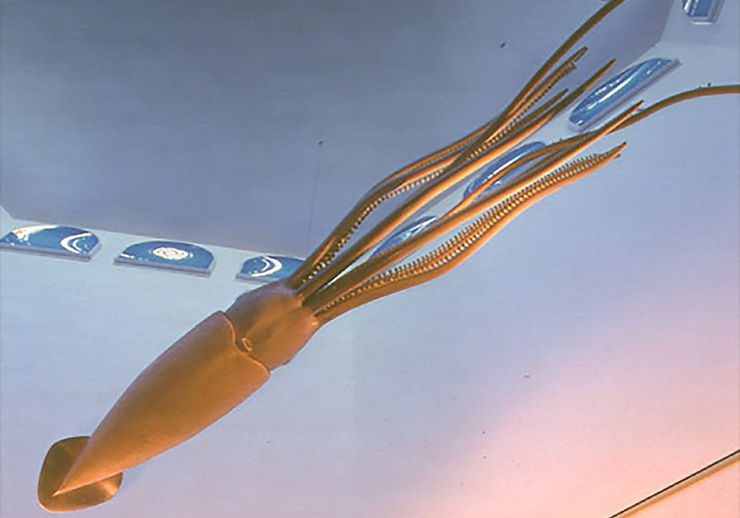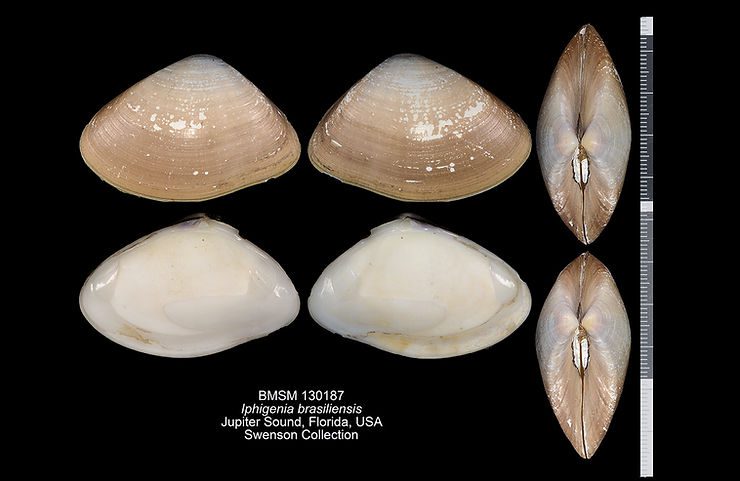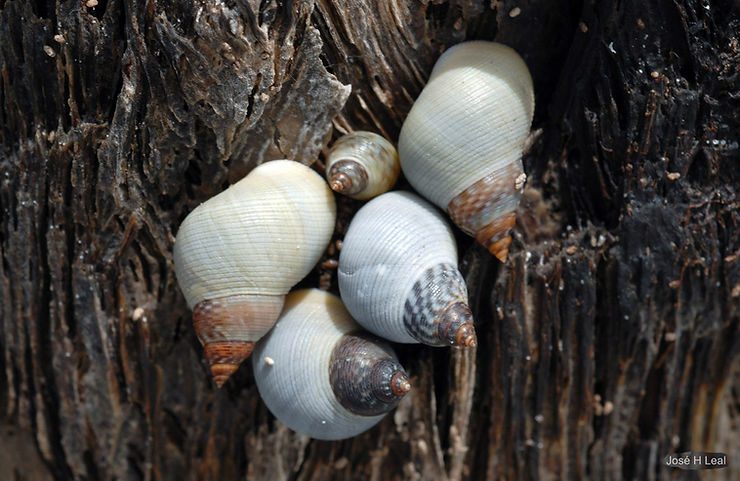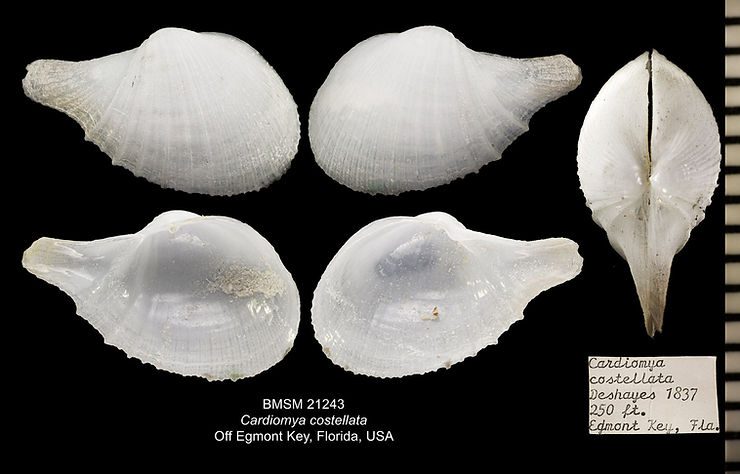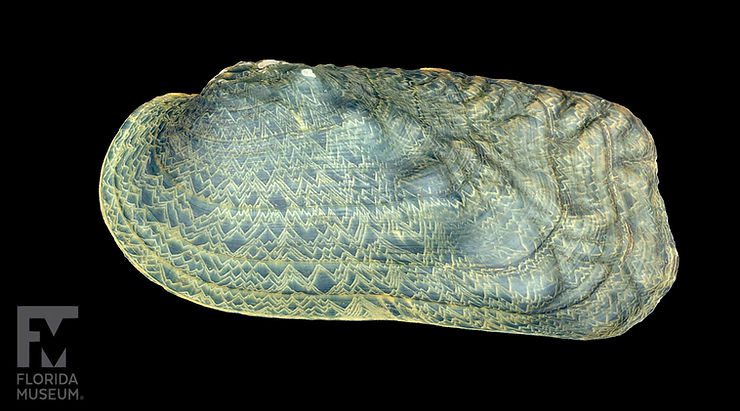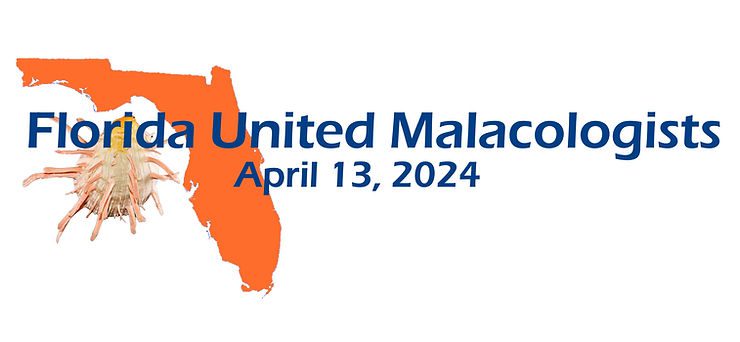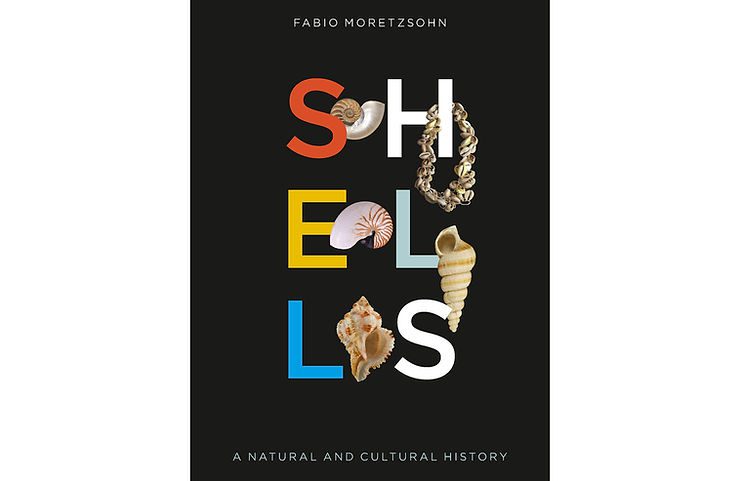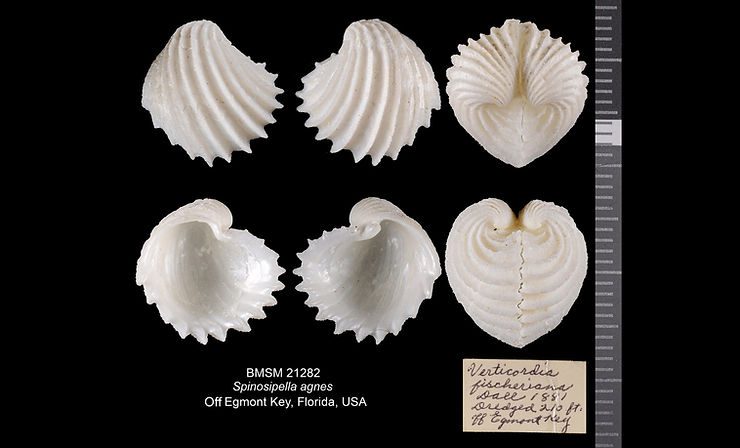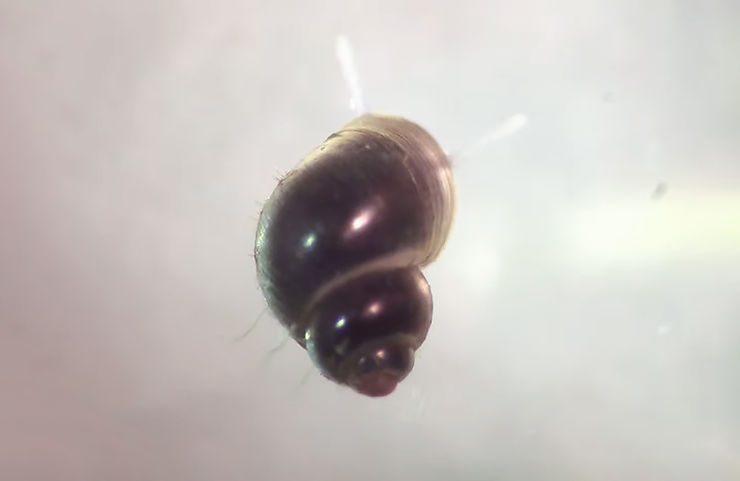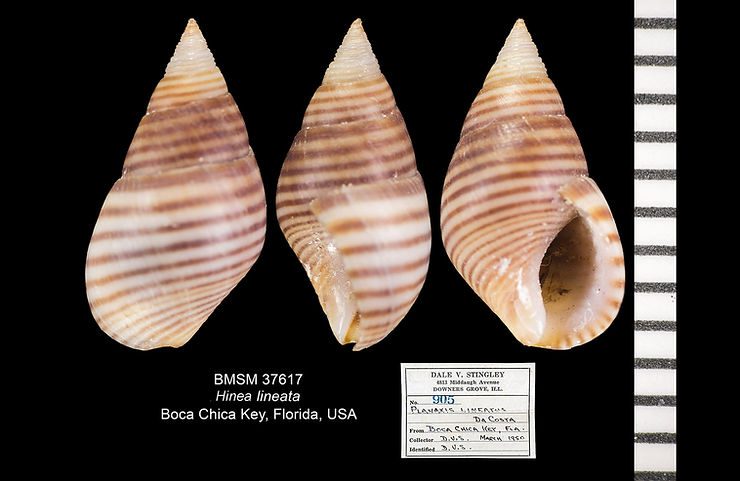
Shell of the Week: The Dwarf Planaxis
Hinea lineata is a small gastropod that reaches only about 10 mm (0.4 inch). The shell is smooth, and typically with narrow, brown spiral bands set against a cream-colored background. The species is found intertidally (between low and high tide lines) from East Florida, Bermuda, Bahamas, throughout the Caribbean south to Venezuela, and mid-Atlantic oceanic islands.
